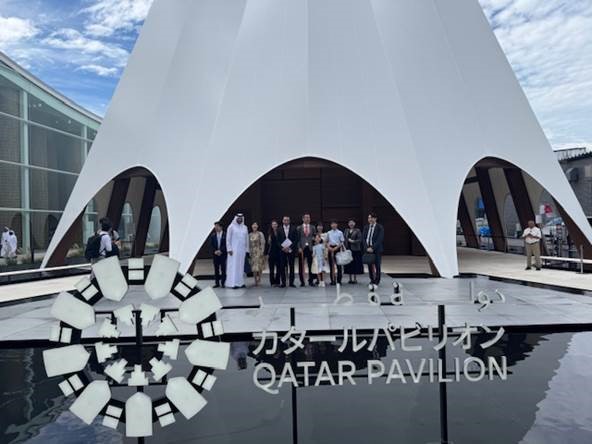Voices of Lived Experience: A Conversation with Charlene Sunkel on Global Mental Health Advocacy

On the occasion of WISH’s MoU signing with the Global Mental Health Peer Network (GMHPN), we’re thrilled to interview Charlene Sunkel—founder and CEO of GMHPN, tireless advocate, and champion for the voices of lived experience in mental health policy.
Q1: Charlene, you’ve spoken powerfully about your own journey with mental health. How has lived experience shaped the ethos and operations of GMHPN?
It goes right to the heart of why we exist. My own journey was a stark lesson in how systems, however well-intentioned, can feel alienating and out of touch when they don’t center the voices of the people they’re meant to serve. That’s why at GMHPN, we’ve built our entire model around a core principle: lived experience isn’t just a tick-box, it’s the foundation.
This means that every decision is infused with the real-world challenges, aspirations, and wisdom that come only from those who’ve walked the path. We see the profound difference it makes: when people with lived experience inform policy and design, interventions become more humane, practical, and genuinely relevant.
This commitment manifests in a few key ways:
First, it means a fundamental shift in identity. In our network, individuals are no longer objects of care or subjects of research, but essential partners and colleagues. We recognize and value their expertise as being of equal importance to clinical or academic knowledge. They are in the room where decisions are made, not as tokens, but as leaders.
This brings me to: “Nothing About Us Without Us.” This isn’t just a slogan; it’s our operational blueprint. It demands the inclusion of our community in all decision-making processes. Because we are there, we can instantly spot and articulate the systemic and societal barriers, the gaps in services, the stigmatising language, the impractical policies, that others might miss, ensuring we are always working to dismantle the very structures that hinder progress.
Ultimately, this lived-experience-led approach allows us to design responsive and impactful interventions that benefit everyone. By starting with the real, nuanced needs of individuals, we create solutions that are more effective, foster greater trust, and build a mental health ecosystem that is not just about treating illness, but about supporting whole people in their journey toward wellness. It’s how we ensure our work is truly for the community, because it is authentically from the community.
Q2: What are some lessons GMHPN has learnt about the power—and pitfalls—of embedding lived experience in mental health policy formulation?
Based on our work at GMHPN, we’ve learned that embedding lived experience is a transformative yet complex process. The central lesson is that while authentic inclusion leads to more robust and effective mental health policies, achieving it requires deliberate effort. The potential for tokenism is a significant pitfall; simply having a lived experience voice in the room is not enough.
We’ve established that the unique expertise of those with lived experience is non-negotiable. The critical work, however, lies in ensuring this inclusion is meaningful. This means actively creating safe, empowering platforms for engagement where individuals can contribute free from stigma, discrimination, and power imbalances. It’s about shifting from a model of consultation to one of genuine partnership.
This leads to our core operating principle: we work together and we learn together. This collaborative approach is what unlocks the true power of lived experience. It allows us to collectively challenge the status quo and design policies that are not just theoretically sound, but are also practical, humane, and truly responsive to community needs. The journey is demanding and requires constant reflection, but it is the only path to creating a system that works for everyone.
Q3: The partnership with WISH is a new chapter for GMHPN. What unique opportunities do you see in this collaboration, and how do you hope it will drive impact?
Our new partnership with WISH marks an incredibly exciting chapter for GMHPN. We see a unique and powerful opportunity in the convergence of our two organisations’ distinct strengths. WISH brings immense convening power, a global platform, and a deep focus on evidence and innovation in health policy. GMHPN brings the essential, and often missing, ingredient: the organised, strategic expertise of lived experience.
This collaboration is fundamentally about scaling our collective impact. By combining WISH’s scientific rigor and global reach with our grassroots, peer-led model, we can push for a new standard in mental health, one where evidence-based policy is inherently and irreversibly informed by lived experience. Together, we can ensure mental health solutions are designed not for, but with, the communities we intend to serve, right from the outset.
The specific opportunities are vast. We envision knowledge sharing that elevates the peer movement onto a global stage, joint advocacy that champions this integrated approach with world leaders, and enhanced educational opportunities that bridge the gap between scientific research and the wisdom of lived experience. This partnership is a chance to demonstrate, at a global scale, that the most effective and humane mental health systems are built on a foundation of genuine partnership between science and lived experience.
Q4: In your experience, what are the most pressing challenges facing peer-led mental health organisations globally?
Based on our global work at GMHPN, we see several persistent and interconnected challenges that peer-led organisations face.
The most immediate hurdle is, without a doubt, funding and sustainability. Peer-led organisations are often grassroots by nature, operating on shoestring budgets and project-based grants, which makes long-term planning and impact incredibly difficult. This is tied to a lack of credibility and institutional support from traditional health systems and donors, who may not yet fully value lived experience as a legitimate form of expertise.
This leads to the second major challenge: the constant battle against entrenched stigma, both within societies and, crucially, within the health sector itself. We are still working to convince policymakers and funders that ‘expertise’ does not end with a clinical degree. The wisdom and unique skill set of those with lived experience are often dismissed, leading to their exclusion from decision-making tables.
To overcome this, capacity building is essential. We must actively nurture the next generation of peer leaders with the skills to advocate, manage, and lead. Furthermore, building cross-sectoral partnerships is a crucial step forward. By aligning with academic institutions, healthcare providers, and global bodies, we can build the credibility, secure the resources, and create the sustainable infrastructure needed for the peer movement to not just survive, but truly thrive and scale its impact.
Q5: What does effective integration of lived experience look like in actual policy? Can you share an example from GMHPN’s work?
Effective integration of lived experience in policy is when lived experience expertise are structurally embedded throughout the entire policy lifecycle, from the initial design and drafting to its implementation and, crucially, its evaluation. It means the voices of those with lived experience are not an afterthought, but a core component of the policy’s DNA.
Although we have been involved in numerous policies and strategic plans, but have not yet experienced the perfect process for effective lived experience integration, despite the good intentions of policymakers. Ideally, effective inclusion means engaging diverse lived experience from the very start, not as a last-minute consultation, but as co-creators in the initial framing of problems and drafting of solutions. It requires a commitment to genuine empowerment, which is demonstrated by providing equitable compensation, capacity-building support, and real decision-making power to ensure participants can shape outcomes. This must be underpinned by a principled approach to engagement that prioritises mental health and wellbeing safety, transparency, and accessibility, creating a platform where a wide spectrum of voices can contribute meaningfully without fear of stigma or dismissal. This structured, respectful partnership moves beyond tokenism to forge policies that are both legitimate and powerfully aligned with real-world needs.
Q6: How do you see the “peer movement” evolving over the next five years, especially with partnerships like ours?
I see the peer movement undergoing a profound and necessary evolution, becoming indispensable architects of mental health systems. Our partnership with a mainstream leader like WISH is a powerful catalyst for this shift. By aligning our international credibility as a lived experience organisation with your global platform, we can effectively mainstream lived experience expertise, ensuring it is no longer seen as an optional add-on but as a core component of ethical and effective health policy.
This collaboration will be key to elevating our advocacy and driving innovation at a greater scale. We will move beyond simply having a seat at the table to co-designing the table itself. The tangible outcome of this will be a new generation of leaders within the movement: expect to see significantly more peer-led researchers shaping the evidence base, more lived experience policy shapers in government and global health agencies, and ultimately, mental health systems that finally reflect the rich diversity and wisdom of the lived experience they are meant to serve.
Q7: For policymakers and institutions still hesitant to embrace peer networks, what’s your elevator pitch? Why is it urgent to centre lived experience now?
My message is this: continuing to design mental health policies without the central involvement of people with lived experience is the single greatest reason these systems so often fail and health funds are waisted. Lived experience is not a soft value-add; it is the critical lens that reveals the difference between a theoretical framework and a practical, humane solution. It’s the difference between creating a system that people merely endure, and one they actually trust and choose to use. In an era of strained resources and rising needs, ignoring this essential expertise isn’t just unwise, it’s an unsustainable approach that costs more in the long run, both in human suffering and public funds. The urgency to centering lived experience is now, because effective solutions cannot be built for a community, but must be built with it.
Q8: Finally, what does a “good day” look like for you—and for GMHPN?
A “good day” for me is no doubt witnessing people with lived experience, especially those who never had an opportunity before to contribute their expertise, out there, advising policymakers and stakeholders on how they can improve the quality of life of communities, and then hearing them say how their voice truly mattered.
It’s witnessing a small but significant dent in the wall of stigma, whether in a news article, a community conversation, or an institution changing its own policy to mandating meaningful and authentic lived experience inclusion throughout their operations.



